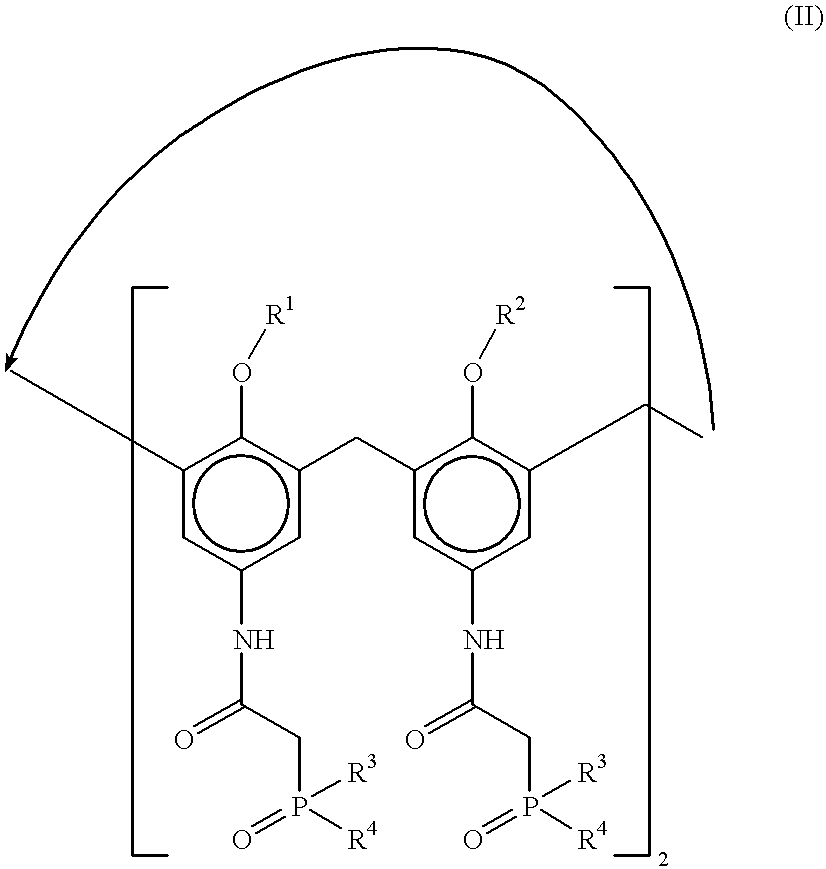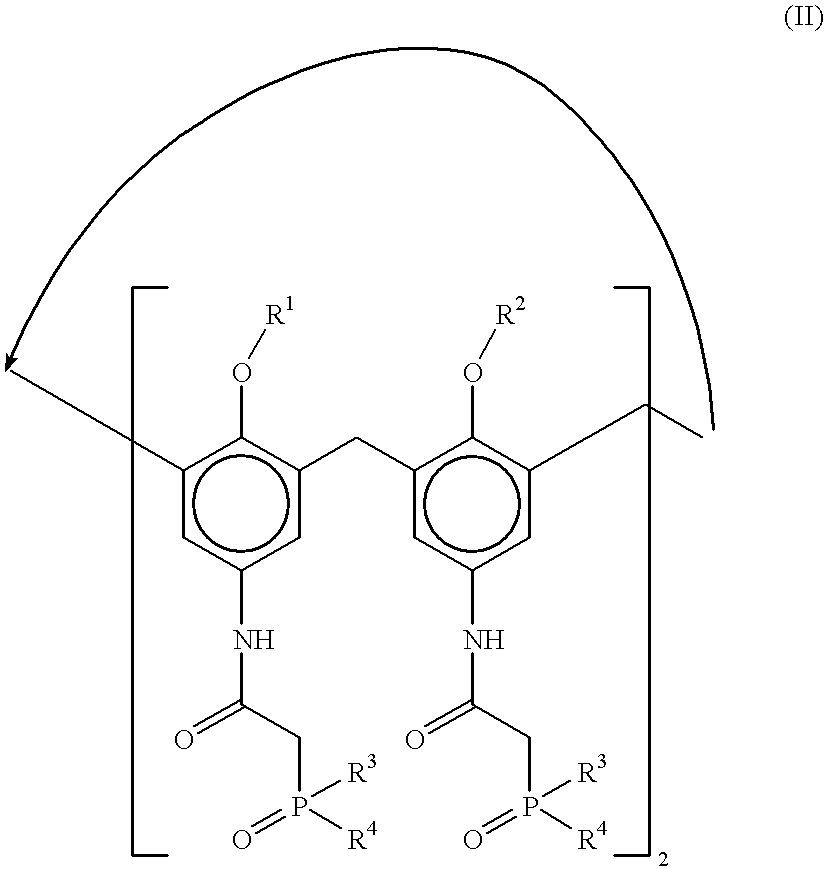Method for separating actinides and lanthanides by liquid-liquid extraction using calixarenes
a liquid-liquid extraction and lanthanide technology, applied in solvent extraction, group 5/15 element organic compounds, reactor fuel elements, etc., can solve the problem of inability to separate actinides and lanthanides from each other
- Summary
- Abstract
- Description
- Claims
- Application Information
AI Technical Summary
Benefits of technology
Problems solved by technology
Method used
Image
Examples
example 1
Separation of Lanthanum and Ytterbium
In this example, these two rare earth elements are separated from an aqueous solution made from a saline medium containing 4 mol / L of NaNO.sub.3 and 0.01 mol / L of HNO.sub.3.
For this separation, an organic phase made from chloroform is used containing 10.sup.-3 mol / L of calixarene A.sub.5.sup.4.
FIG. 1 shows that this separation can be obtained with chloroform using this concentration. For this calixarene concentration, the distribution coefficient of lanthanum is 140 while the distribution coefficient of ytterbium is 0.2
After extraction, the percentage of lanthanum extracted is equal to ##EQU2##
99.9% lanthanum and 16.6% ytterbium are thus extracted in the organic phase. Re-extraction can then be done with 0.01 M nitric acid.
example 2
Separation of Lanthanum and Ytterbium
In this example, the same approach as in example 1 is used, but the organic phase is made from chloroform containing 3.multidot.10.sup.-4 mol / L of the same calixarene.
Examination of FIG. 2 shows that in these conditions, the distribution coefficient of lanthanum is equal to 15 while the distribution coefficient of ytterbium is 0.02.
93.8% lanthanum and 2% ytterbium is thus extracted.
As before, the re-extraction can be done with 10.sup.-2 M nitric acid, thus bringing the composition of the aqueous solution from 50-50% lanthanum and ytterbium to 93% lanthanum and 2% ytterbium.
example 3
Separation of Europium and Gadolinium
In this example, the starting solution is an aqueous solution made from a saline medium with 4 mol / L of NaNO.sub.3 and 0.01 mol / L of HNO.sub.3.
Referring to FIG. 4, it is seen that the europium / gadolinium separation can be done using as diluent chloroform and a A.sub.5.sup.4 calixarene concentration of 4.6.multidot.10.sup.-4 mol / L. In these conditions, the distribution coefficient of europium is 1.12 and the distribution coefficient of gadolinium is 0.88. The percentage of europium extracted is thus 52.8% and the percentage of gadolinium extracted is 46.8%. With re-extraction using 0.01 N nitric acid and the aqueous solution undergoing re-extraction (after having added 4 mol / L of NaNO.sub.3) an extraction by the same organic phase, then repeating these operations several times, an enrichment of the organic phase in europium is obtained and a good separation.
PUM
| Property | Measurement | Unit |
|---|---|---|
| temperature | aaaaa | aaaaa |
| volume | aaaaa | aaaaa |
| volume | aaaaa | aaaaa |
Abstract
Description
Claims
Application Information
 Login to View More
Login to View More - R&D
- Intellectual Property
- Life Sciences
- Materials
- Tech Scout
- Unparalleled Data Quality
- Higher Quality Content
- 60% Fewer Hallucinations
Browse by: Latest US Patents, China's latest patents, Technical Efficacy Thesaurus, Application Domain, Technology Topic, Popular Technical Reports.
© 2025 PatSnap. All rights reserved.Legal|Privacy policy|Modern Slavery Act Transparency Statement|Sitemap|About US| Contact US: help@patsnap.com



